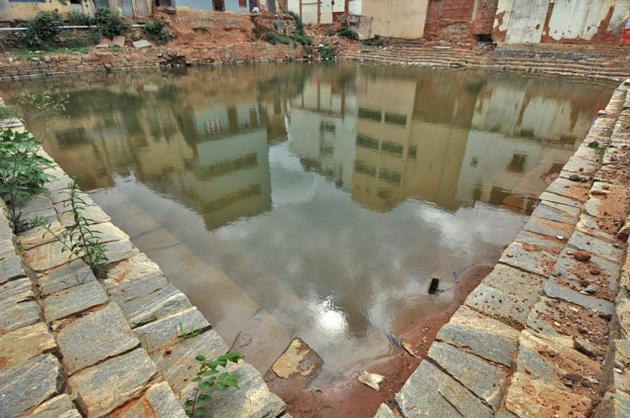Bangalore, October 11: The discovery of a square kalyani (stepped tank) on the premises of the famed Someshwara temple in Ulsoor three years ago created much curiosity among the history enthusiasts of Bangalore.
While the 1,000-year history of the temple is a constant source of interest, what generated even greater attention was an array of rather unexpected items dumped in the tank during the British times that were unearthed during the excavation of the tank. These included glasses, iron implements, and old pots, which were manufactured in Canada, London and Belgium. The manufacturers’ names were found carved on each of them. As the kalyani was in the Cantonment area, these were perhaps items discarded by the army officers.
One of the extensive medieval temples in Bangalore city, the temple construction began during the Chola period and it was renovated and layers added by Kempe Gowda II in the late 17 Century. The unique feature of the temple is that the saiva navanathas (nine nathas) saints’ idols here are carved on the eastern wall of the navaranga, a lone example in India.
The unearthed tank measures 40 metres in square and it has ascending steps on its four sides. The construction style is simple and similar to the stepped tank at Devanahalli or Chikkajala. According to ancient temple shastras, every temple should have a stepped-tank on the north-eastern corner of the plot, which is followed here too. This served as a sourced tank for the temple’s annual rituals such as Teppotsava.
What exactly had caused the tank to be abandoned is yet another matter of curiosity, since there are no historical documents on how the tank came to be filled up. An old Survey of India Map dated 1884 indicatesthe existence of this tank beside the temple. This proves that till 1885 the tank was in use.
Epidemic link?
Perhaps, the mystery is related to the plague epidemic that broke out in Bangalore in 1896.
That was when the British governing authorities took measures to close all open water sources including wells and large-sized water tanks.
As this temple was also part of the British Cantonment, the civic department might have advised the local authority to close this as well.
The excavation for the kalyani in 2010, yet again, brought the entire history of the temple – from the medieval to the British era – alive for Bangaloreans.

